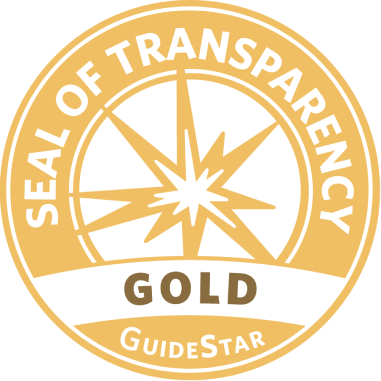Trauma has a profound impact on the human mind and body, often leaving individuals struggling to express the pain, confusion, and emotional scars they carry. For many, traditional methods of therapy may feel overwhelming or inadequate. In these cases, art and creativity offer a powerful alternative path to healing. At the Omid Foundation, we have seen how engaging in creative practices helps marginalized adolescent girls and young women process their trauma, rebuild their confidence, and envision a brighter future.
This article explores the transformative role of art and creativity in trauma recovery, examining why these practices are so effective, the various forms they can take, and the life-changing impact they can have on individuals and communities.
The Connection Between Art and Healing
Art has been used as a form of expression and healing for centuries. Whether through painting, music, dance, or writing, creative activities allow individuals to explore and communicate emotions that are often difficult to articulate verbally. This is particularly significant for trauma survivors, whose experiences may feel too overwhelming or painful to discuss openly.
Neuroscientific research supports the healing power of art. Trauma often disrupts the brain’s ability to process emotions and memories, particularly in the verbal and logical regions. Creative practices engage other parts of the brain, bypassing traditional cognitive pathways and enabling individuals to express themselves in a safe, nonverbal manner.
How Creativity Helps Trauma Recovery
Art and creativity aid trauma recovery in several key ways:
- Providing a Safe Outlet for Expression
Trauma survivors often feel silenced or unable to communicate their experiences. Art provides a safe and nonjudgmental outlet for self-expression, allowing individuals to explore their feelings without fear of criticism or misunderstanding.
For example, a young woman who has endured abuse may find it easier to convey her emotions through painting or writing than through spoken words. By externalizing her pain, she can begin to process it and work toward healing.
- Reducing Stress and Anxiety
Engaging in creative activities promotes relaxation and mindfulness, reducing stress and anxiety. The act of creating can be meditative, helping individuals focus on the present moment rather than being overwhelmed by past trauma or future uncertainties.
At the Omid Foundation, we encourage young women to use activities like drawing or crafting as tools for managing emotional distress. These practices foster a sense of calm and control, which is essential for recovery.
- Rebuilding Confidence and Self-Worth
Trauma often erodes self-esteem and leaves individuals feeling powerless. Creating something tangible—a painting, a poem, a piece of jewelry—gives survivors a sense of accomplishment and agency. This boosts confidence and reinforces the idea that they are capable of growth and transformation.
In our programs, we’ve seen young women beam with pride as they showcase their creations, recognizing their own talents and potential.
- Facilitating Connection and Community
Art has the unique ability to bring people together. Group creative activities, such as music or theater workshops, foster connection and mutual support. Sharing one’s art with others can also help build trust and empathy, breaking down the isolation that trauma often creates.
Our group art therapy sessions provide a safe space for young women to bond with peers who have faced similar challenges, creating a network of shared understanding and encouragement.
- Encouraging Emotional Release
Trauma survivors often suppress their emotions to cope with overwhelming experiences. Art can serve as a release valve, allowing buried feelings to surface in a constructive and healing way.
Whether through abstract painting, dance, or even aggressive strokes of charcoal, creative expression can help individuals release pent-up anger, sadness, or fear, paving the way for emotional balance.
Forms of Creative Expression in Trauma Recovery
Art therapy and creative practices can take many forms, allowing individuals to find the medium that resonates most with them. Some of the most effective include:
- Visual Arts
Drawing, painting, sculpting, and collage-making are powerful tools for self-expression. These activities allow individuals to externalize their emotions and create visual representations of their inner world.
- Writing and Storytelling
Journaling, poetry, and storytelling provide a structured way to explore and process emotions. Writing allows survivors to reclaim their narratives, giving voice to experiences that may have felt silenced.
- Music
Playing an instrument, singing, or simply listening to music can evoke powerful emotions and facilitate healing. Music therapy is particularly effective in helping individuals regulate their emotions and reduce anxiety.
- Dance and Movement
Dance allows individuals to reconnect with their bodies, which may feel alienated or unsafe after trauma. Movement therapy helps survivors release tension, improve self-awareness, and rebuild a sense of physical empowerment.
- Theater and Performance
Acting and role-playing provide opportunities for individuals to explore their emotions in a controlled and supportive environment. Theater can also help build confidence and foster a sense of community.
Success Stories: Creativity in Action
At the Omid Foundation, we have witnessed countless stories of transformation through art and creativity.
One such story is that of Amina, a young woman who came to our program after experiencing severe trauma. Initially withdrawn and unable to express her feelings, Amina began attending art therapy sessions. Through painting, she created vivid, abstract pieces that reflected her emotions. Over time, she began to open up about her experiences, using her art as a bridge to communicate her pain and resilience.
Today, Amina is not only thriving but also mentoring other young women, using art to help them find their own paths to healing. Her journey highlights the profound impact of creative expression on trauma recovery.
The Role of NGOs in Promoting Creative Healing
Organizations like the Omid Foundation play a crucial role in integrating art and creativity into trauma recovery programs. Our initiatives focus on:
Providing Access: Many marginalized individuals lack access to creative resources. We provide materials, workshops, and safe spaces for young women to explore their creativity.
Training Professionals: We partner with art therapists, counselors, and educators who specialize in using creativity to promote healing.
Fostering Community: Through group activities and exhibitions, we create opportunities for survivors to connect, share, and celebrate their journeys.
Advocating for the Arts: We raise awareness about the importance of art in mental health, encouraging communities and policymakers to invest in creative programs.
Moving Forward: Embracing Creativity as a Healing Tool
Art and creativity are not merely pastimes; they are powerful tools for transformation and healing. For trauma survivors, they offer a way to navigate the complexities of recovery, fostering resilience, confidence, and connection.
At the Omid Foundation, we are committed to empowering young women to harness their creative potential, enabling them to overcome the scars of trauma and embrace their full potential. By integrating art into our programs, we help build a future where healing is not just possible but vibrant and inspiring.
Through collective action, investment in the arts, and unwavering support for survivors, we can ensure that creativity continues to illuminate the path to recovery for those who need it most. Together, we can turn pain into purpose and empower individuals to reclaim their lives through the transformative power of art.

